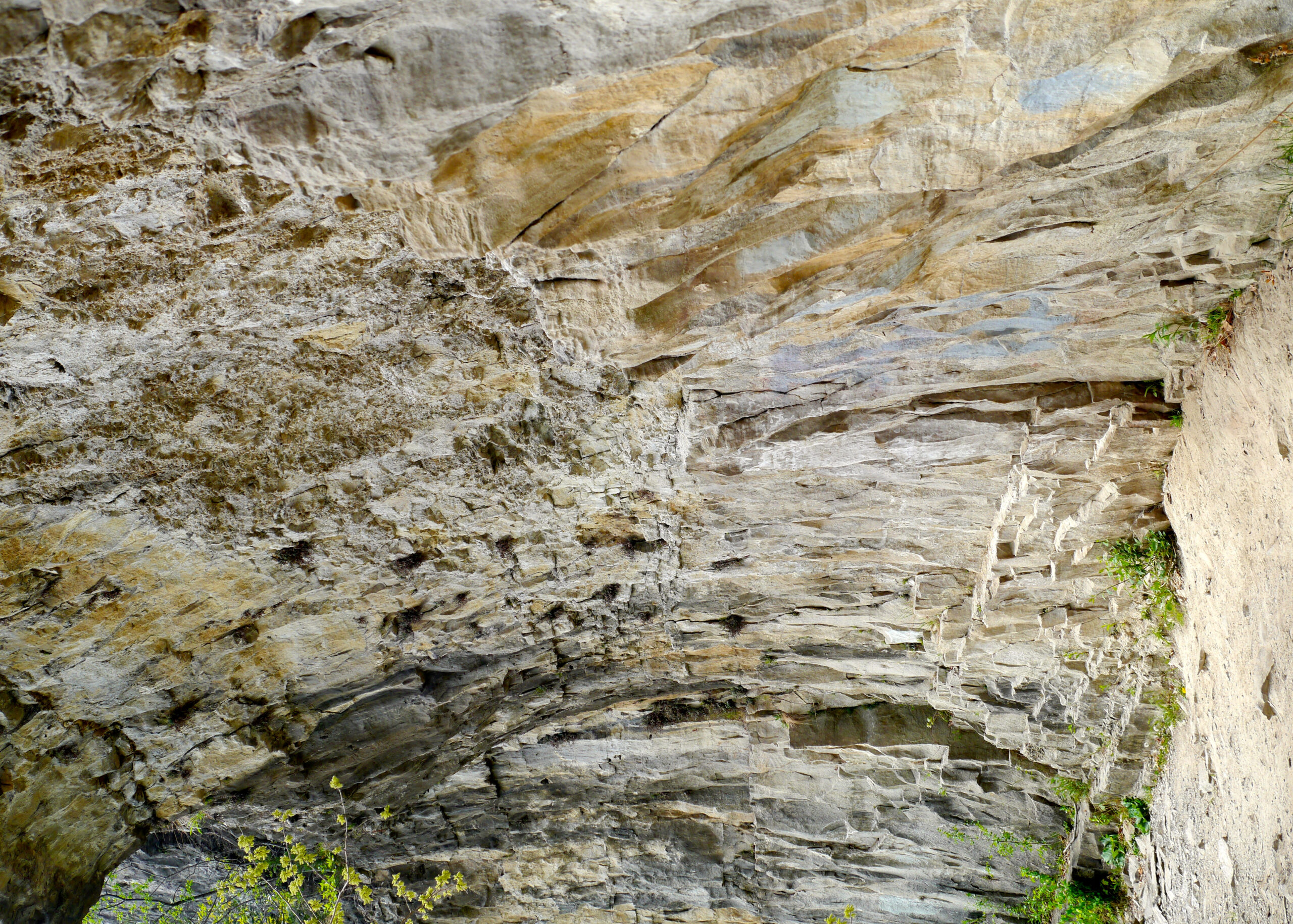
In my last post, I shared the deep-time story of my place, Niagara. The name, Niagara, comes from the original inhabitants of this land, the Neutral Nations, who in their language named it, “Onguiaahra,” which means, “the strait” or “thundering water.” While this area sits between two Great Lakes, they’re connected by a strait, the Niagara River. The thundering waters of Niagara Falls are where the river flows over the Niagara Escarpment. Below Niagara Falls, the river flows 11 kilometres through a gorge to Queenston Heights. There it takes a turn, creating whirlpool rapids, and continues another 12 kilometres to Lake Ontario.
“The exposed sedimentary rock of the gorge dates back 400 million years to the Ordovician and Silurian periods of the Paleozoic era. Rocks of Ordovician origin are the Queenston red shales. They’re visible in the lower part of the gorge walls from the mouth of the Niagara River to Niagara Glen. Rocks of Silurian origin can be seen along the entire length of the gorge. They consist of sandstones, shales, limestones, and dolostones.” ~ A Nature Guide to Ontario (1997)
A Walk down the Gorge
Halfway between the Falls and Lake Ontario is the Niagara Glen Nature Center, where there are a series of trails down and through the gorge to the river below. It’s a wonderful place to walk through history and experience nature. Yesterday, my friend Carrie and I did just that. First we walked down a metal staircase beside cliff walls made of limestone. They formed more than 400 million years ago from coral reef sediments, hints of the tropical sea that once covered the land. We walked alongside these walls for a bit and then began our descent to the river along rocky trails. Surrounded by Carolinian forest and huge, moss-covered boulders, you feel as though you’re miles away from city life. The roar of the river is the constant audible backdrop.
Once you get to the river there are numerous eddys, where water collects and swirls around. On this late-April day, which felt quite springlike, we were surprised to find ice balls spinning and bouncing around, the last remnants of winter. I’m sure they won’t be there long.
There’s something very comforting about sitting on a solid rock in the midst of a forest, with the sounds of birds and fast moving water keeping you company. Yet, even these rocks which feel so solid, are gradually wearing away. I took photos which show the rock surface beside the base of the rock, which was sand. No day is the same in the gorge. Everything is always changing. The past has created what I find here now in the present. How we inhabit this land will help shape its future.
Kim, such a delight to see what you are doing these days. I have thought of you often. In July I moved back to Indiana and thought I would google you and see what you are up to. Finally saw the loft of the church where you had an art exhibit at one time years ago. Your photographs and writing are still inspiring obviously. Thanks for sharing what you do and who you are, your gifts.
Oh Sister Marj how wonderful to see your name pop up here. When I think back, my talks with you were just the beginning of truly following a particular path, one that I’m still on but it’s always changing and evolving. So, thank you! I’m sure you are doing the same.
Your description of Niagra Gorge made me feel like I was walking right along with you! Walking through nature with the constant sound of the water must be incredible!